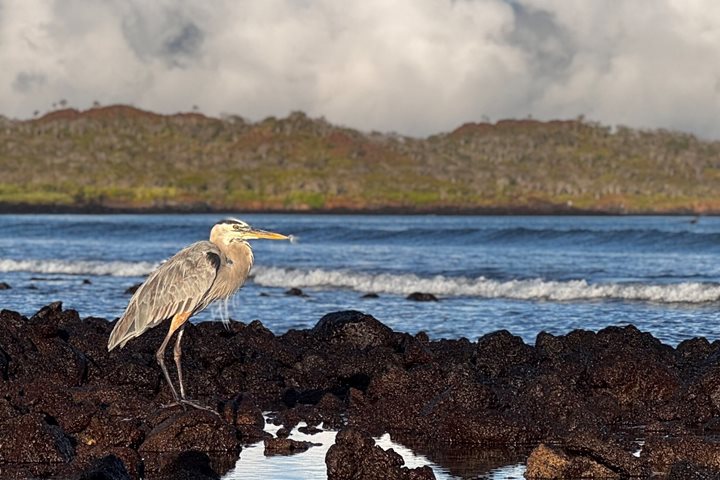The story of human life on Santa Cruz Island is a fascinating one, about the harmonious way the inhabitants of this archipelago have managed to organize their living around many rules, all for sake of conservation.
“I find it interesting to visit a town along the week, to taste how humans can coexist with the creatures of Galapagos. There are migratory controls and several restrictions within the Park, but people do seem to understand the reasons behind, and to respect them”, says Rodrigo Moterani, our Video Chronicler on board. Santa Cruz, the second largest island in the Galapagos, has a population of about 20,000 and close to 10,000 Galapagos giant tortoises.
This is one of the four inhabited islands of the archipelago. Most of its land is made up of protected national park, but there are farming areas, a few villages and the biggest town, Puerto Ayora. Even though individuals cannot move into the archipelago freely, tortoises can and do spread through all vegetation zones at their will—as they should, being the first and real owners of the islands.
We learned all about the successful stories of the tortoise breeding program while visiting the National Park headquarters in the morning, and we were able to see tortoises at all stages of life, as they are carefully raised and prepared to be repatriated to their islands of origin. Afterwards, we had the opportunity to walk through the lovely town, observing the bustling streets and shops, and people and animals coexisting respectfully.
After our time in town, we headed up to the highlands to observe these gentle giants in the wild. We were very fortunate, and we saw dozens of tortoises in the wild, walking freely and grazing in the fields. Soon it was time to head back to the National Geographic Endeavour, where we were treated to a performance by local musicians. It was a fascinating day, and we were excited to experience a day on an island which is such an excellent example of harmony with nature.







